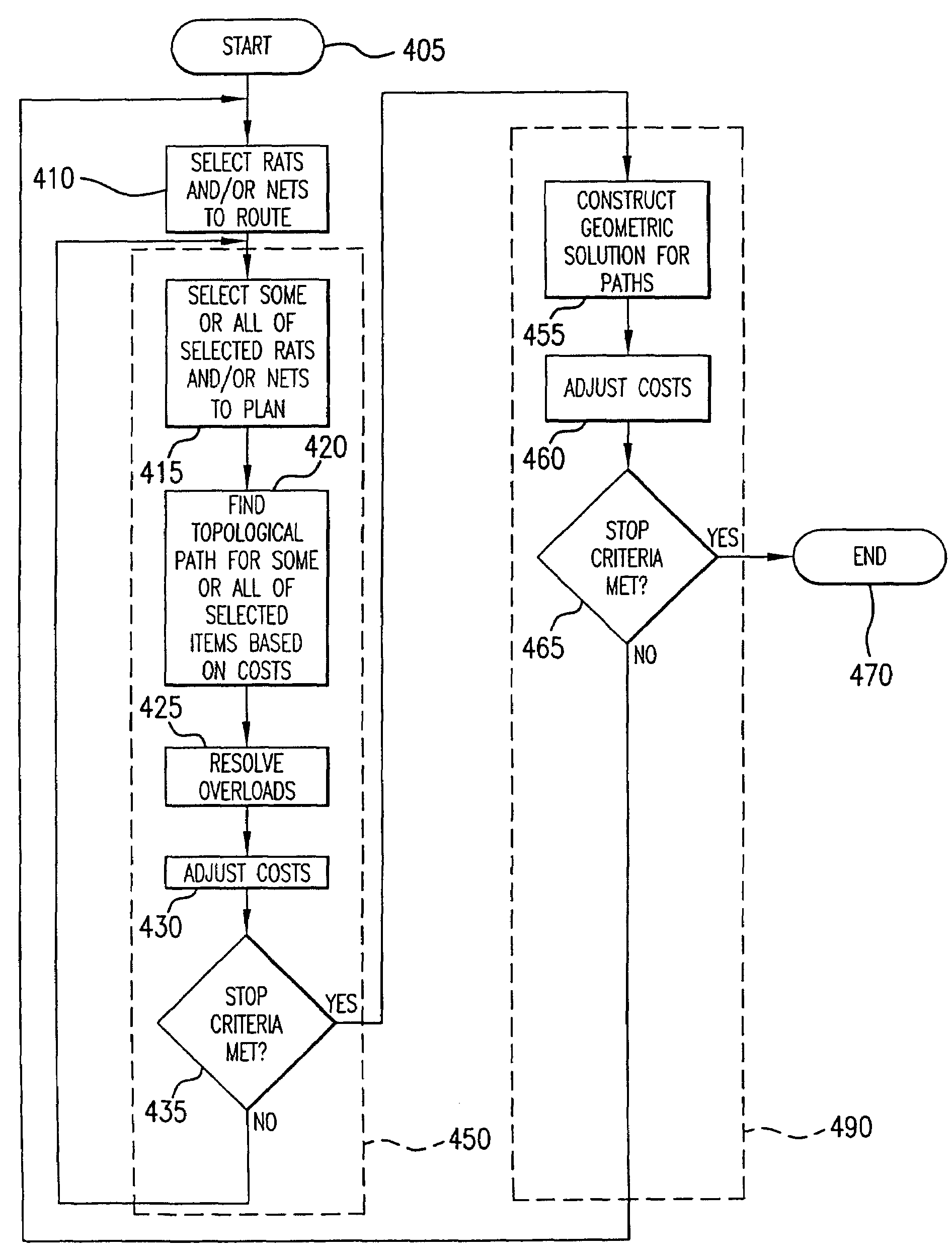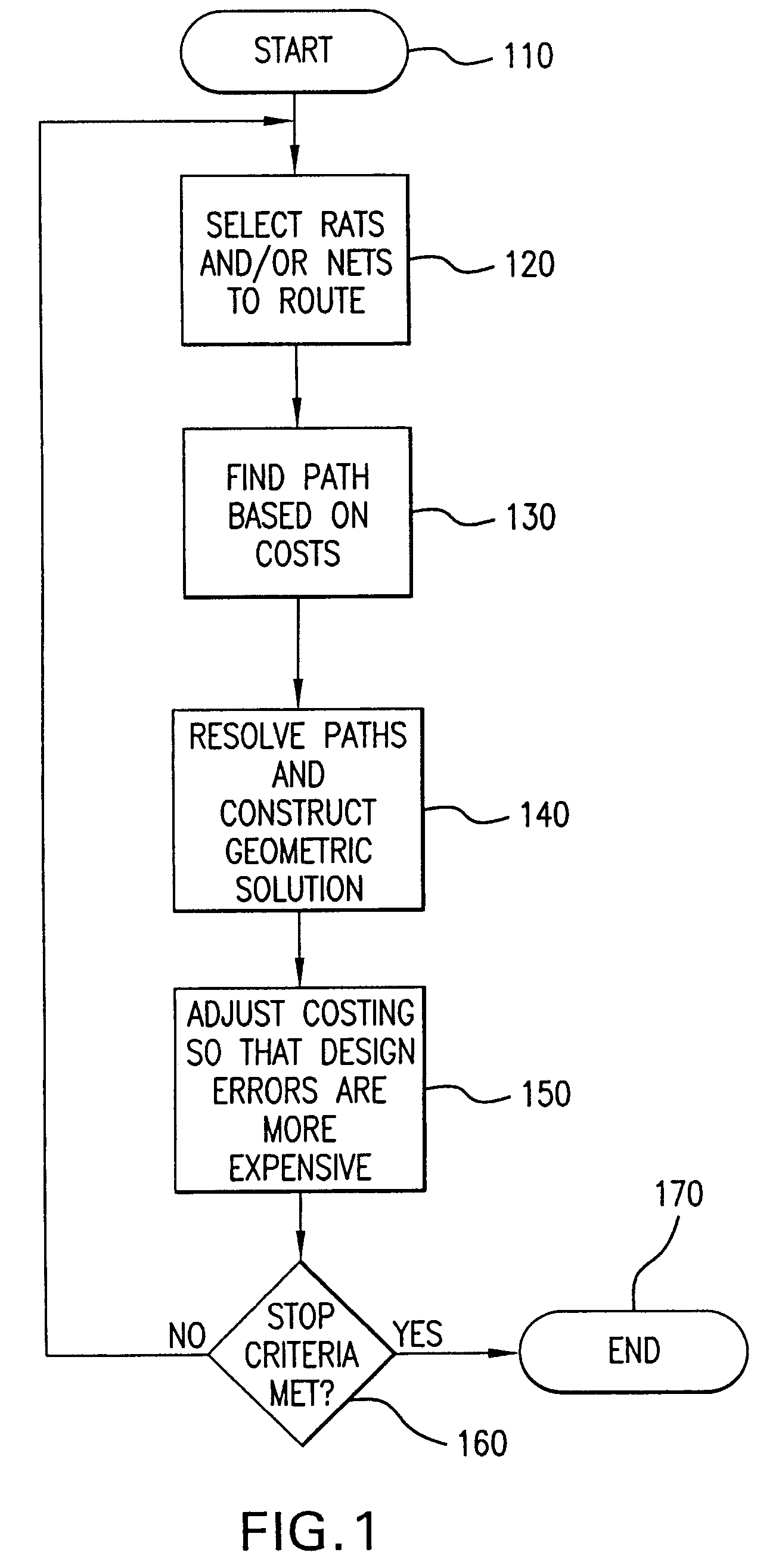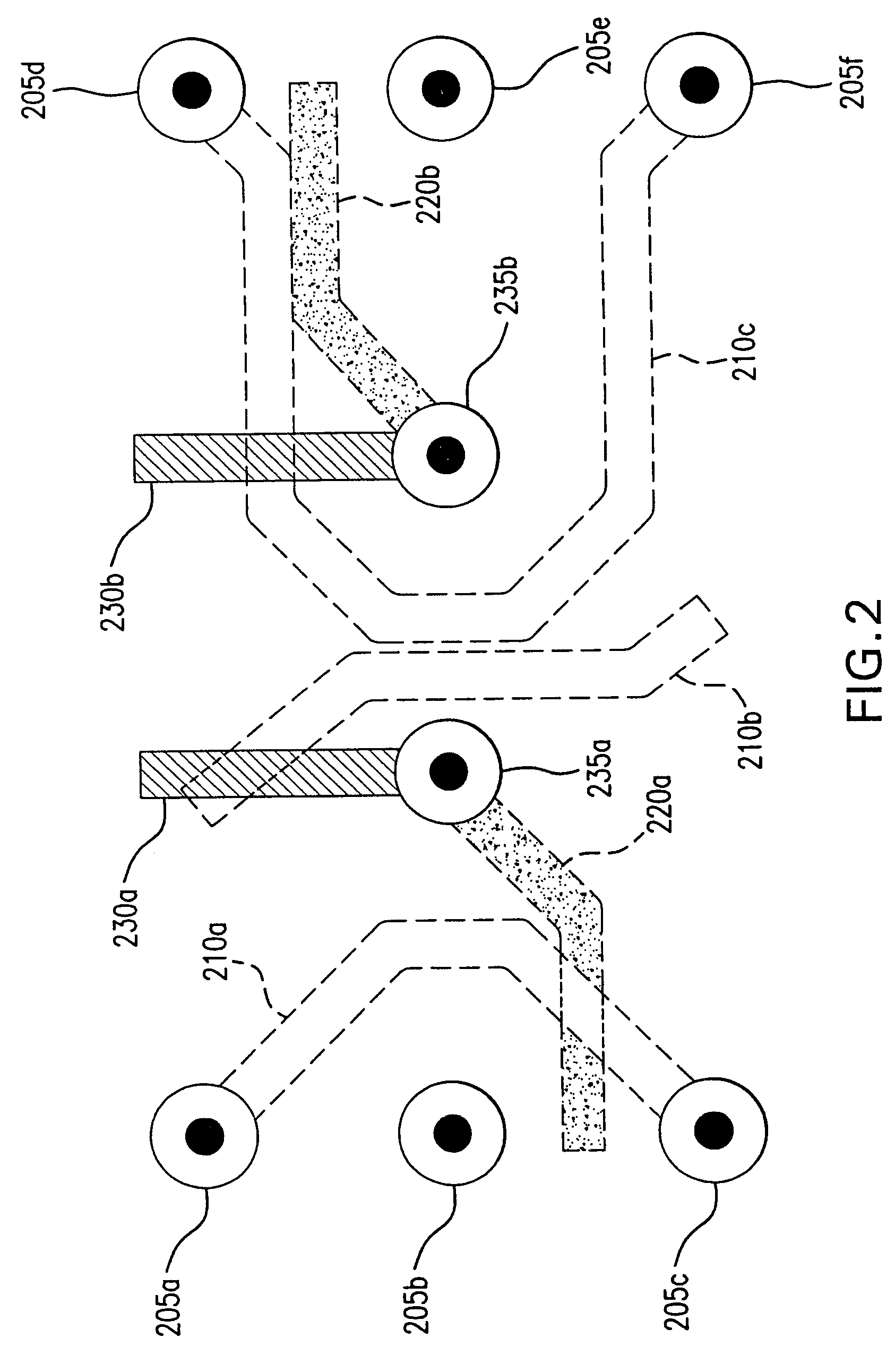Method for resolving overloads in autorouting physical interconnections
a physical interconnection and overload technology, applied in the direction of electronic switching, pulse technique, instruments, etc., can solve the problems of a geometric router's path resolution procedure not being able to create a drc geometric solution based on a candidate topological solution, computationally intensive and therefore difficult to solve, and potentially complex shapes in a geometrically defined routing space can be moved in a geometrically defined routing space. , the problem of computational complexity and complexity
- Summary
- Abstract
- Description
- Claims
- Application Information
AI Technical Summary
Benefits of technology
Problems solved by technology
Method used
Image
Examples
Embodiment Construction
[0025]The circuit routing field has an associated set of terms, several of which will now be defined for purposes of clarity. As used herein, “terminal” is a fixed routable circuit element establishing the beginning or end of an electrical connection. Terminals include pads or pins associated with circuit components, such as integrated circuit packages, and vias, which are conductors, often formed as plated through-holes, completing electrical connections between circuit layers. A “net” is a collection of terminals, all of which are, or must ultimately be, electrically connected to one another by an associated conductive trace. A “rat” defines a connection from one terminal of a net to another. A rat may connect connection points that lie on different circuit layers, whereas a “ratline” is such a connection that is confined to a single circuit layer. The objective of an autorouter is to electrically connect the terminals of a net in the order specified by the rats.
[0026]Terminology ...
PUM
 Login to View More
Login to View More Abstract
Description
Claims
Application Information
 Login to View More
Login to View More - R&D
- Intellectual Property
- Life Sciences
- Materials
- Tech Scout
- Unparalleled Data Quality
- Higher Quality Content
- 60% Fewer Hallucinations
Browse by: Latest US Patents, China's latest patents, Technical Efficacy Thesaurus, Application Domain, Technology Topic, Popular Technical Reports.
© 2025 PatSnap. All rights reserved.Legal|Privacy policy|Modern Slavery Act Transparency Statement|Sitemap|About US| Contact US: help@patsnap.com



